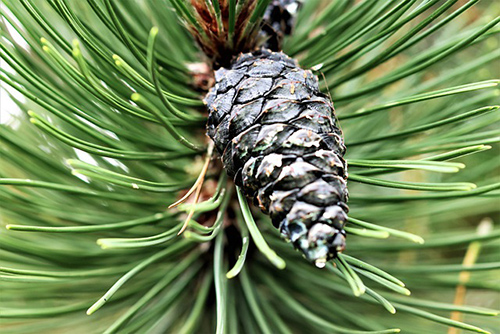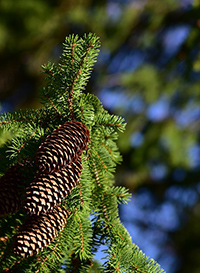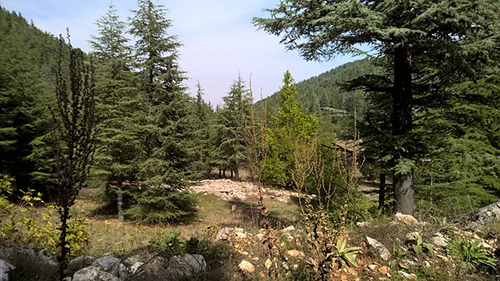Contents
Among the many pine tree species known, only two have remarkable medicinal properties: the maritime pine tree (Pinus pinaster Soland), also known as the cluster pine tree, and the wild pine tree (Pinus silvestris L.), also known as the white pine tree.
The maritime pine tree has larger needles (leaves) and more giant pine cones than the wild pine tree. Both species produce turpentine; however, the maritime pine tree produces more.

Healing Properties and Warning
Turpentine is a fatty resin contained in the buds and the outer layers of the pine tree bark, from which it naturally flows or due to cuts. Two main components form it:
- An essence also called turpentine (and popularly called turps), rich in pinene, hydrocarbon, which is obtained after distillation, and
- A resin called colophony or Greek tar.
The resin is the solid residue after the essence vaporizes. The resin (colophony) is used in dressings, salves, and ointments with rubefacient and antirheumatic properties. The most widely known from ancient times is the so-called royal ointment or basilic, which, according to Font Quer, is made with one part of colophony, one part of turpentine, one part of wax, one part of fat, and three parts of olive oil.
Turpentine and its essence have balsamic, antirheumatic, antiseptic, diuretic, and depurative properties and prevent kidney and urinary stones. The principal applications of these substances are as follows:
- Respiratory disorders: Inhaled, in massage, or orally taken, they are beneficial in all kinds of respiratory conditions (bronchitis, asthma, etc.) and in the case of colds, rhinitis, and sinusitis. Hot baths with pine buds or turpentine essence give exceptional ease for asthma.
- Anti-inflammatory: Turpentine and its resin redden the skin in external applications, baths, and massage, reducing inflammation of the deeper tissues. They render excellent results in rheumatic aches, be they articular or muscular (lumbago, torticollis, neck aches, etc.), and in those produced by throbbing or spasms.
- Invigorating: Turpentine has recently been proven to stimulate the suprarenal glands, producing refreshing and revitalizing effects throughout the body.
WARNING! Inhalation or ingestion of excessive doses of turpentine or its essence can irritate the central nervous system, especially for children.
Pine Tree Scientific Facts

- Similar species: Pinus sylvestris L.
- French: Pin.
- Spanish: Pino.
- Environment: All ten known species of pine trees are distributed all over Europe and America’s warm and cold regions. It mainly grows in sandy soils.
- Description: This tree of the Pinaceae family grows from 15 to 40 m high and has evergreen, needle-shaped leaves. Male flowers (yellow stamens) and female flowers (pine cones) grow on the same tree.
- Parts of the plant used medicinally: The buds and the resin.

Pine Tar: A Powerful Emollient
Pine tar is obtained by employing dry distillation of the trunk and the roots of the wild pine tree. This substance has a very complex chemical composition, whose principal components are phenolic substances with balsamic, expectant, antiseptic, and mainly emollient (skin soothing) properties.
Pine tar can be taken up to one gram daily as capsules or jelly pills. However, its most important application is external use for skin disorders: dermatosis (chronic inflammation or degeneration of the skin, such as eczema and psoriasis), myosis (infection caused by fungi), and parasitosis (afflictions caused by parasites, such as scabies). Pine tar is applied as soap, shampoo, or cream for external use.
White Pine
The inner bark of white pine (Pinus strobus) is a valued remedy for congestion and coughs caused by colds. It can be taken as a tea (or as an ingredient) in cough syrup. The young leaves and resinous sap can also be used as cold remedies. In external applications, a poultice of the sap or inner bark of the white pine can be used as a dressing for sores and wounds. The white pine sap is well known for healing wounds and surface cuts.
Infusion: Steep one teaspoon of the inner bark or young shoots in one cup of water and take a mouthful at a time as needed. Tincture: two to ten drops in water is a dose. Mixture: Steep one teaspoon of white pine bark and one tablespoon of wild cherry bark, American spikenard root, and sassafras bark in one pint of boiling-hot water for thirty minutes, and take one teaspoon every hour.
How to use Pine Tree

- Infusion, prepared with 20-40 g of pine buds per liter of water, drinking three or four cups daily.
- Turpentine essence: Take from three to five drops three or four times daily.
- Baths: Prepare a decoction of 500 g of pine buds in four liters of water, boiling for half an hour. Strain and add the liquid to the bathtub water (hot). A medicinal bath can also be prepared by adding 40-50 drops of turpentine essence to the bathwater.
- Massage: With a cotton cloth soaked in turpentine (or its essence), rub the chest of people suffering from bronchitis until the skin becomes a healthy red color. It is also applied to the joints and muscles if inflamed and aching.
- Vapor inhalations: Add a handful of pine buds (30-50 g) or drops of turpentine essence to a bowl with one or two liters of water. Heat on an electric heater (to avoid combustion gasses), and breathe the steam in deeply.
DISCLAIMER: All content on this website is presented solely for educational and informational objectives. Do not rely on the information provided as a replacement for advice, diagnosis, or treatment from a qualified medical expert. If you are pregnant, nursing, or have any preexisting medical concerns, talk to your doctor before using any herbal or natural medicines.
REFERENCES
- George D. Pamplona-Roger, M.D. “Encyclopedia of Medicinal Plants.” George D. Pamplona-Roger, M.D. Encyclopedia of Medicinal Plants. Ed. Francesc X. Gelabert. Vols. 1 San Fernando de Henares: Editorial Safeliz, 2000. 323, 324. Print.
- Vance Ferrell Harold M. Cherne, M.D. The Natural Remedies Encyclopedia [Book]. – Altamont, TN: Harvestime Books, 2010. – Vol. Seventh Edition: 7: pp. 185.
- Adore Your Outdoors: https://adoreyouroutdoors.co.uk/pine-tree-benefits/
- WebMD: https://www.webmd.com/diet/what-to-know-pine-needle-tea
